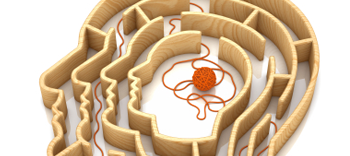The Challenge of Linking Autism with Brain Changes
Despite remarkable advances in neuroscience and brain imaging, scientists still face a challenge definitively linking Autism Spectrum Disorder (ASD) with brain changes. It's easier to link, or correlate, behavior with brain differences. It's always hard pinning down the cause.
This section describes the difficulties in uncovering the neural causes of ASD. These difficulties are, in part, due to the heterogeneous nature of the disorder, meaning the disorder is expressed in diverse ways. They are also due to the heterogeneous causes of ASD, as described in the "Risk Factors" section. And they are due in part to the fact that autism affects complex social behaviors, including language, that just cannot be studied in laboratory animals.
Key Points
- ASD has multiple causes, each with numerous effects.
- ASD prevalence is more common in boys than girls, but we do yet not know why.
- The range of behavioral deficits in patients with ASD is most likely due to abnormal function of multiple brain pathways.
- Currently, no single animal model captures all of the behavioral deficits observed in ASD.
Misconception
Most cases of autism can be explained by direct exposure to a single risk factor.
Fact
ASD is thought to be a multi-factorial disorder, meaning that multiple risk factors combine to increase the chances of developing symptoms.
Read about other misconceptions.


